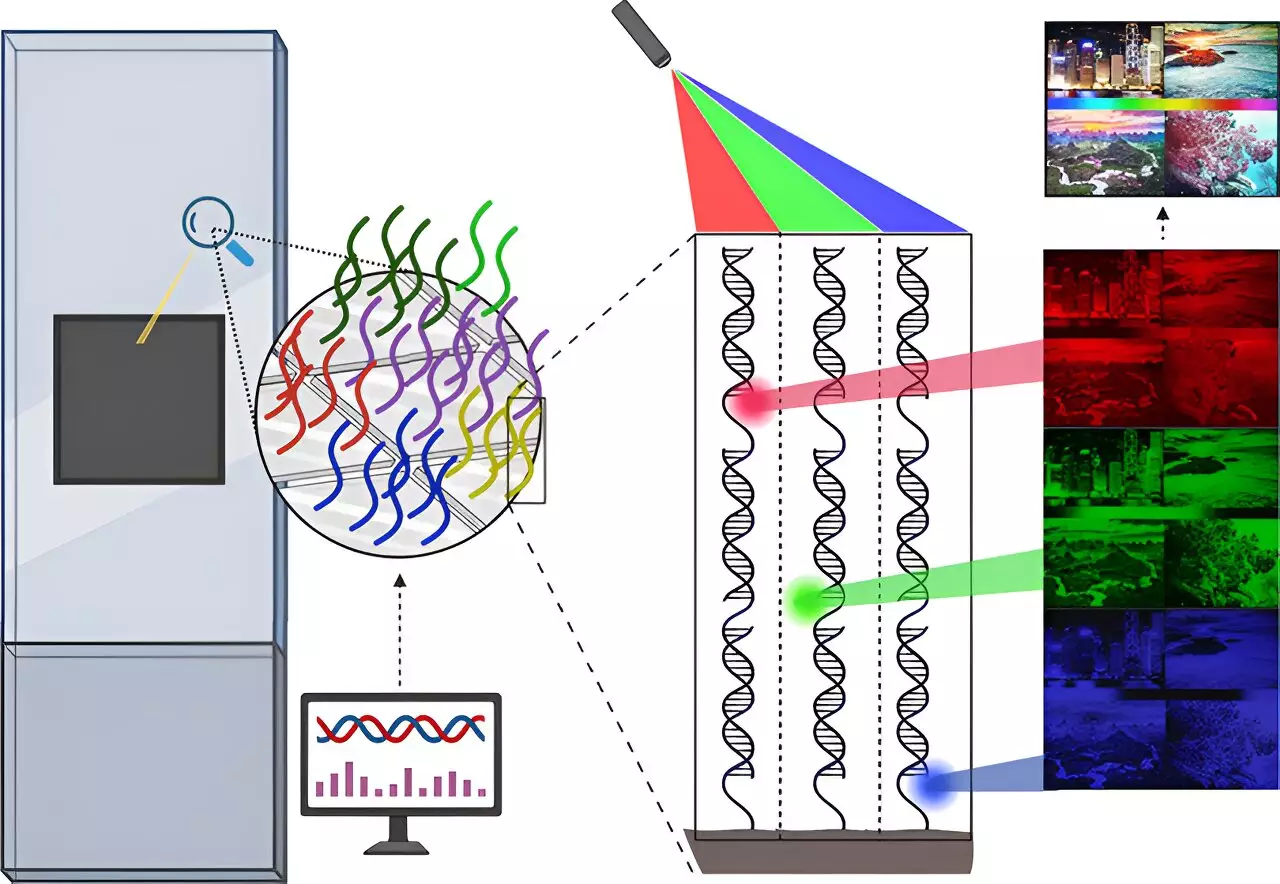In a groundbreaking study, researchers at the University of Vienna have successfully manipulated the stability and color properties of DNA duplexes to create a palette of 16 million colors. This significant advancement in DNA technology far surpasses the previous limitation of only 256 colors. Their findings, published in the Journal of the American Chemical Society, demonstrate the potential for DNA to be used as a canvas for precise color reproduction and image replication.
Complementary DNA sequences play a crucial role in the recognition and assembly of DNA duplexes, which are essential for gene reading and replication. The rules governing the formation of duplexes, known as hybridization, are predictable and programmable. By harnessing the power of complementary sequences, researchers can assemble synthetic genes and construct large-scale nanostructures. However, until now, the color capabilities of DNA duplexes have been limited.
The research team at the Institute of Inorganic Chemistry utilized controlled hybridization to create a vast palette of colors. By linking small DNA strands containing fluorescent markers to a long complementary DNA strand, the researchers were able to emit red, green, and blue colors. The stability of the duplex was fine-tuned by strategically removing specific bases along the DNA sequence. Lower stability resulted in darker shades of color, allowing for the creation of 256 shades for each color channel. By mixing and matching these shades within a single DNA duplex, the researchers achieved a staggering 16 million color combinations, equivalent to the complexity of modern digital images.
To achieve such precision in DNA-to-color conversion, the research team synthesized over 45,000 unique DNA sequences. They employed a method called maskless array synthesis (MAS), a parallel DNA synthesis technique. MAS enabled the simultaneous synthesis of hundreds of thousands of unique DNA sequences on a miniature surface. This surface, comparable in size to a fingernail, served as a canvas for the researchers to control the location of each DNA sequence and assign corresponding colors. Through the use of computer scripts, the team automated the process of transforming digital images into accurate DNA photocopies with color fidelity.
Beyond imaging, the ability to encode a DNA color code holds promising applications in data storage. Tadija Kekic, a Ph.D. candidate in the group of Jory Lietard, envisions the potential for storing vast amounts of data on DNA. This concept builds upon the recent recognition of quantum dots in the field of color chemistry, which was awarded the Nobel Prize in 2023. The development of a DNA color code opens new avenues for data storage on DNA molecules, pushing the boundaries of technology even further.
The University of Vienna study highlights the immense potential held within DNA duplexes for color manipulation and replication. From the creation of a palette of 16 million colors to the possibility of data storage, DNA technology continues to push boundaries and revolutionize the world of color. With the tools to precisely control and program DNA hybridization, scientists unlock a new era of color chemistry that expands our understanding of this fundamental aspect of our visual perception. As researchers continue to delve into the possibilities offered by DNA, the future of color remains vibrant and promising.


Leave a Reply